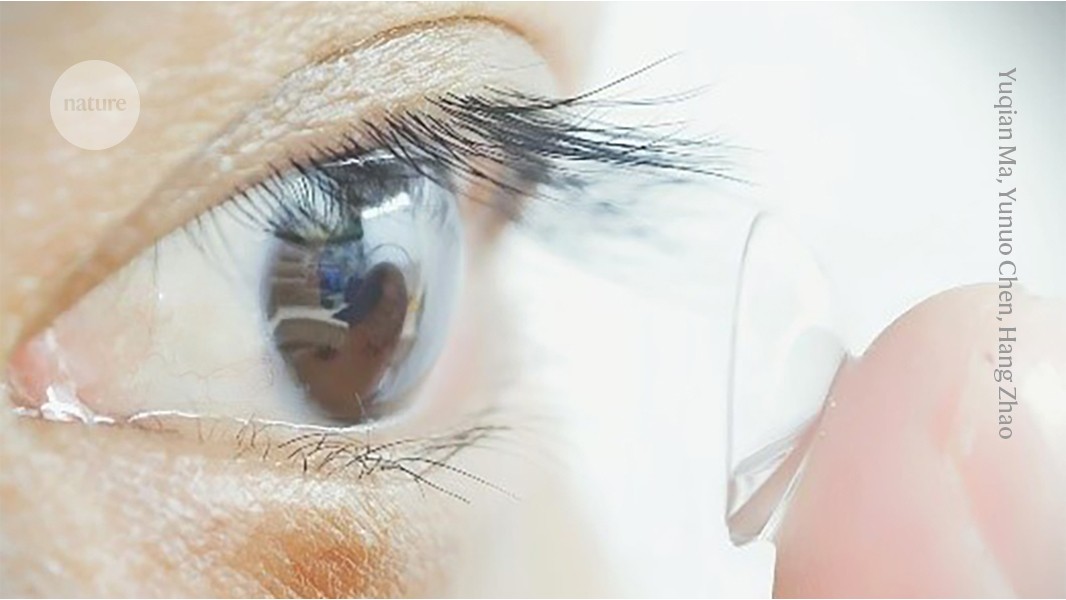These contact lenses give people infrared vision — even with their eyes shut

Sci-fi-style technology uses nanoparticles to convert infrared light into visible light that humans can see

People who tested a new type of designer contact lens could see flashing infrared signals from a light source.Credit: Yuqian Ma, Yunuo Chen, Hang Zhao (CC BY-SA)
Humans have a new way of seeing infrared light, without the need for clunky night-vision goggles. Researchers have made the first contact lenses to convey infrared vision — and the devices work even when people have their eyes closed.
The team behind the invention, led by scientists at the University of Science and Technology of China (USTC) in Hefei, gave the lenses their power by infusing them with nanoparticles that convert near-infrared light in the 800–1,600-nanometre range into shorter-wavelength, visible light that humans can see, in the 400–700-nanometre range. The researchers estimate that the lenses cost around US$200 per pair to make.
The technology, which was detailed in Cell on 22 May1, “is incredibly cool, just like something out of a science-fiction movie”, says Xiaomin Li, a chemist at Fudan University in Shanghai, China. It opens up “new possibilities for understanding the world around us”, he adds.
Pros and cons
Near-infrared light sits just outside the range of wavelengths that humans can normally detect. Some animals can sense infrared light, although probably not well enough to form images.
Night-vision goggles enable humans to see infrared radiation, but they are bulky and require a power source to work. The new lenses avoid these limitations while also offering richer, multi-coloured infrared images that night-vision goggles, which operate on a monochrome green scale, typically do not.
However, the lenses do have their own shortcomings. Because the embedded nanoparticles scatter light, the images the lenses create are blurry. The team partially corrected this by putting the technology into glasses with additional lenses that redirect the light. Moreover, unlike night-vision goggles, which amplify light to detect low-level infrared signals, the lenses also allow users to see only intense infrared signals, such as those emitted by light-emitting diodes (LEDs).
For these reasons, some critics don’t think the lenses will prove useful. “I cannot think of any application that would not be fundamentally simpler with infrared goggles,” says Glen Jeffery, a neuroscientist at University College London who specializes in eye health. “Evolution has avoided this for a good reason.”
Nevertheless, the authors think that their lenses can be further optimized and foresee several possible uses for the invention. For instance, wearers would be able to read anti-counterfeit marks that emit infrared wavelengths but are otherwise invisible to the human eye, says co-author Yuqian Ma, a neuroscientist at the USTC.
Li, who was not involved in the work, offers another possibility: the lenses might be worn by doctors conducting near-infrared fluorescence surgery, to directly detect and remove cancerous lesions “without relying on bulky traditional equipment”.
‘An exhilarating moment’
Enjoying our latest content?
Login or create an account to continue
- Access the most recent journalism from Nature's award-winning team
- Explore the latest features & opinion covering groundbreaking research
or
Sign in or create an accountdoi: https://doi.org/10.1038/d41586-025-01630-x
This story originally appeared on: Nature - Author:Elizabeth Gibney


















